What is better - a well or a well for a country house
Many owners of suburban areas are interested in what is better - a well or a well for a country house. It is difficult to answer this question unequivocally, it all depends on many factors, and specifically on the local geological conditions, your financial capacity, and for what purposes the water will be used, and how much of it is required. Ideally, it is better to have two sources of water supply, but not always there are financial resources for it, so often you have to choose one of the two.
Geological conditions
The difference between a well and a well is in the way of development and development, but their common task is to obtain water from the aquifer of the underground horizon.
One of the main and determining factors is the depth of the aquifer, the quality and quantity of water in it. You can obtain such data in two ways, order a geological survey, or conduct a survey of neighbors who have wells and wells. It is the depth of the aquifer that sometimes plays a decisive role in choosing a source of water supply.
The aquifer can be considered the reservoir that, after opening, releases water. Groundwater is divided into three main types:
- Verkhovodka - lies at a depth of 5 m, is not used for drinking water supply due to low quality and seasonal dependence.
- Groundwater - These are interstitial waters that occur on the first waterproof layer. Most often, the wells arrange it on this aquifer. Groundwater is relatively shallow, less dependent on seasonal fluctuations, but not always of good quality.
- Artesian water - they belong to pressure waters, lie, as a rule, at a great depth, about 80 m, and are well protected with water layers. They are independent of seasonal fluctuations, have good drinking qualities, but are also found with a high content of iron and hardness salts (this applies to wells that take water from limestone).
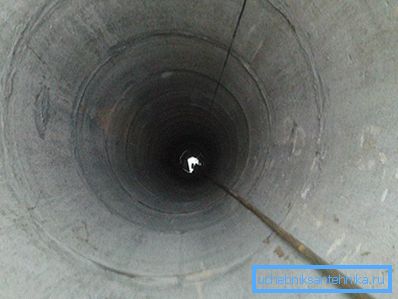
It is not necessary to arrange a well in the swamps and in the marshland, in such geological conditions the well will be preferable.
If the aquifer lies at a depth of 10 m, then the well would be the best option, but the deeper the aquifer is, the more preferable will be the drilling of a well. True, there are wells and 30 m depth, but this is not always justified and at cost may be more expensive than drilling a well. In addition, when digging deep wells, there is still a problem with the export of soil. It is preferable, from the point of view of drilling, to be a well, if there are many stone inclusions - they make drilling very difficult.
Availability of uninterrupted power supply
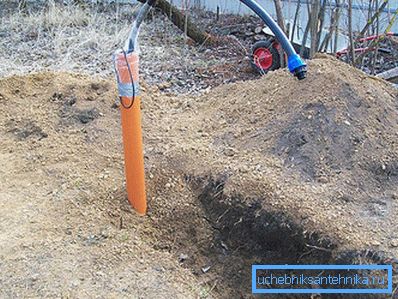

An important factor that can play in favor of the well. If electricity is often lost in your area, the well is not the best option, although it is possible to connect an electric generator or install a hand pump if the depth of the water mirror allows. But if you do not have such an opportunity, then it is impossible to get water from a well without electricity, and in the case of a well, this problem is solved with a bucket and chain (cable).
Water quantity and quality
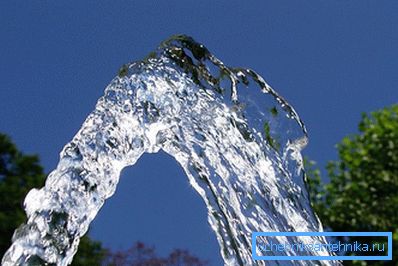
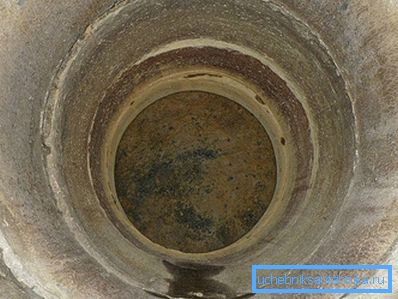
A frequent problem of wells is a low flow rate and a decrease in the level during the dry season. Ideally, a well can produce no more than 500 l / h, but most often the flow rate does not exceed 150 l / h. The well, planted on the sand, can give several cubes per hour, and from limestone - up to 10 m3/ hour, but the quality of the water is likely to not be drinking. If the flow rate up to 150 l / hour fully satisfies all your needs, then you undoubtedly need to make a well. There is an opinion that the quality of water in the well is worse due to the fact that the water pipe goes there, but this opinion is wrong - it all depends on the quality of work. If the upper circles are well sealed and a clay lock is made, the surface waters will not get there. If the amount of water up to 1 m3/ hour does not satisfy you (remember that there is also a possibility of a decrease in the flow rate of the well in the summer), then a well would be the best option.
Operation and cleaning
The service life of the filter well, planted on the sand, is less than 10 years, after which it needs to be cleaned, and this requires special equipment, it is not always possible on its own. The service life of filterless wells planted on limestone is up to 25 years, and it is not always possible to restore them, besides, the cleaning of such wells will require the services of special organizations, and at a cost this may be equal to the cost of a new well.
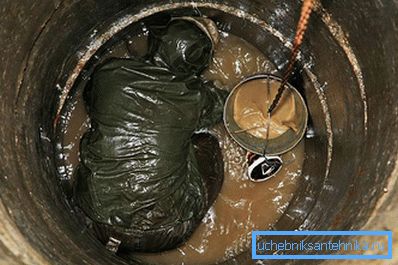
The well has no such problems, and it is easy to clean it. Also, wells planted on the sand, do not like long downtime. If the well is not used for a long time, this leads to its premature zapochechivanie and failure, therefore this should be taken into account. For giving or a country house which are operated seasonally, the well will be the best option for the organization of water supply.
Well and well equipment


As a rule, a well pump is used as water-lifting equipment for a well, which is more expensive than the surface one used for organizing water supply from a well. There are, of course, deep wells, where it is not possible to organize water supply using a surface pump or pumping station, but we do not consider this option.
Also, when setting up a well, it is necessary to install a caisson, which is also expensive, and if the groundwater level is high, this will not only complicate the installation of the caisson, but also increase costs by several times. You can, of course, connect the well with an adapter, but this will complicate the repair work in the future. The well of such problems with the arrangement does not suggest that it makes it more attractive compared to the well.
Video
In this video you will be told what is best for a country house - a well or a well: